The Theology of Liberation
Freedom and fearlessness in the time of disruptions
 Bibek Debroy
Bibek Debroy
 Bibek Debroy
Bibek Debroy
 Hindol Sengupta
Hindol Sengupta
 |
17 May, 2024
|
17 May, 2024
/wp-content/uploads/2024/05/Theologyliberation1.jpg)
(Illustration: Saurabh Singh)
OVER DINNER AT a literature festival in Goa, the conversation turned to the projects we were working on. It so transpired that Hindol was working on a book on the experience of reading the Ashtavakra Gita during a time of immense personal turmoil including, though not at all limited to the Covid-19 pandemic, and requested Bibek if he, as the preeminent living translator of Hindu spiritual texts, and the only person ever to have completed the translation of both the Ramayana and the Mahabharata in their lifetime, might consider doing a new translation of the Ashtavakra Gita. “The two texts, the translation by Bibek, and the contemplative journey of reading the Ashtavakra Gita by Hindol, could then be combined into one unified project”. Between the same covers, the reader would not only be able to go on a journey of the experience reading the Ashtavakra Gita but would also be able to read a fresh translation of the remarkable original text and discover their own path through the immortal words.
This combined text—the translation, and the experience of reading the text from a non-monastic, though deeply reflective, perspective—hopes to encourage many new readers to approach the eternal lessons of the Ashtavakra Gita with the fearlessness that it advocates to embrace the freedom it promises.
WHAT IS THE ASHTAVAKRA GITA?
The Ashtavakra Gita tells us nothing about the sage Ashtavakra. Whatever we know about Ashtavakra comes primarily from the Mahabharata.
The Mahabharata is divided into sections, known as parvas. The word parva/parvan means division or joint and the Mahabharata is divided into such parvas. Most people know that the Mahabharata has eighteen parvas. In this list of eighteen parvas, Vana Parva or Aranyaka Parva, is the third. This is the book of the forest, so to speak, when the Pandavas have been exiled to the forest. It is the longest of the eighteen parvas. Vana Parva is divided into other parvas or sub-divisions. One such sub-division is Tirtha Yatra Parva. The sage Narada arrives and tells the Pandavas to visit tirthas, sacred places of pilgrimage. In Tirtha Yatra Parva of the Mahabharata, we learn about Ashtavakra.
While Ashtavakra was still inside the womb, the child corrected his father’s studies. Angry at this, Kahoda cursed him. Ashta means eight while vakra means bent or crooked. Kahoda’s curse referred to a physical deformity and that is how Ashtavakra was born, bent in eight parts of his body
There are three chapters about Ashtavakra. In the course of their travels, the Pandavas met the sage Lomasha. Lomasha pointed out the hermitage of Shvetaketu, Uddalaka’s son. Lomasha told them, the foremost exponents of Brahman were Shvetaketu and Ashtavakra, Kahoda’s son. Kahoda was Uddalaka’s disciple and married Sujata, Uddalaka’s daughter. Sujata conceived. While he was still inside the womb, the child corrected his father’s studies. Angry at this, Kahoda cursed him, “Since you spoke while you were still inside, you will be crooked in eight ways.” Ashta means eight while vakra means bent or crooked. Kahoda’s curse referred to a physical deformity and that is how Ashtavakra was born, bent in eight parts of his body. Obviously, there are no paintings of Ashtavakra that go back to that period. There are contemporary paintings and those show Ashtavakra to be crooked, physically deformed. Shvetaketu and Ashtavakra were of the same age. There was a king named Janaka, the king of Mithila. Janaka had a scholar brahmana in his court and his name was Bandi. Bandi was fond of debating with other scholars. Once defeated, the vanquished would be drowned in the waters. Much before Ashtavakra was born, Kahoda went to King Janaka’s court and was defeated by Bandi in this way.
This was kept a secret from Ashtavakra and Ashtavakra grew up thinking that Uddalaka was his father. He got to know the truth when he was twelve years old and he and Shvetaketu journeyed to King Janaka’s court, to witness a sacrifice King Janaka was performing and to debate with Bandi. The gatekeeper wouldn’t allow them in and there was a discussion-cum-debate between Ashtavakra and Janaka, with King Janaka speaking through the gatekeeper. Impressed with the learning, Ashtavakra was allowed to enter and there was a debate between Ashtavakra and Bandi. With Bandi defeated, Kahoda was rescued and Kahoda, Ashtavakra and Shvetaketu returned to their hermitage. The Mahabharata doesn’t tell us anything more about Ashtavakra. Nor does it say anything about King Janaka accepting Ashtavakra as a guru.
There is a stray mention of Ashtavakra in the Valmiki Ramayana too. The Valmiki Ramayana is divided into sections known as kandas and there are seven kandas. The sixth is Yuddha Kanda, the section that deals with the battle between Rama’s army and Ravana’s army. When the battle was over and Ravana and the rakshasas were destroyed, as a result of Shiva’s favours, Dasharatha appeared before Rama and said that he had been saved by Rama, just as Ashtavakra had saved a brahmana (meaning Kahoda). There is also the Adhyatma Ramayana, sometimes regarded as part of Brahmanda Purana. In Aranya Kanda of the Adhyatma Ramayana, there is a reference to Ashtavakra. When Rama and Lakshmana were wandering around, looking for Sita, they came upon Kabandha, a rakshasa. Kabandha actually means a headless torso and this rakshasa was gigantic. Naturally, Rama asked him about how he came to become a rakshasa. Kabandha used to be a gandharva. Proud of his beauty, when Kabandha saw the malformed Ashtavakra, he laughed at him. Ashtavakra cursed the gandharva that he would become the rakshasa Kabandha. However, Ashtavakra was also full of compassion. Therefore, when the gandharva prayed for forgiveness, Ashtavakra gave him the boon that when Rama cut off his arms, he would become a gandharva again. Finally, there is Bhavabhuti’s Uttararamacharita, written much later, about Rama’s later life. In the initial part of this play, specifically the first act, Ashtavakra comes to visit Rama and Lakshmana from rishi Rishyashringa’s hermitage. Ashtavakra has no special role, beyond that of conveying messages and there is no reference to his being special, or his being malformed.
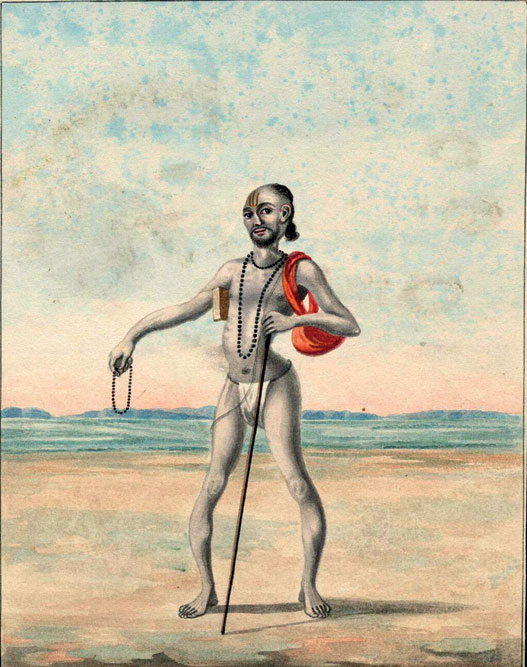
The Ashtavakra Gita is a definitive text of the Advaita Vedanta path of Indian philosophy. Advaita means not two, or more commonly, non-dual. Advaita Vedanta teaches that there is no difference between the individual soul and the universal consciousness, between the atman and Brahman
The Ashtavakra Gita is a straight dialogue between Ashtavakra and King Janaka. Dialogue is the right word. To suggest that Ashtavakra is the guru and Janaka is the shishya is not quite correct, since beyond a point, it is a dialogue among equals. There is no prologue and no prelude. We aren’t given any background to the conversation. The conversation just starts and in 20 chapters and 285 shlokas, the level of dialogue is raised higher and higher, reaching a zenith in the 18th chapter.
By Bibek Debroy
THE ROPE AND THE SNAKE
I spent four months, during the Covid-enforced lockdown, reading the Ashtavakra Gita every day. During this time, every few days I read parts of the book, first from the beginning to the end. Then, as it is a short book, I went back and read different portions again and again. It is, I felt, impossible to read the Ashtavakra Gita only once. It is a book that never really finishes. The Ashtavakra Gita is too simple. Therein lies its profundity. When you read the Ashtavakra Gita, if you read it with care, it is almost like listening to your soul. You might feel, as I did, that there had never been a time when I did not know what the book had to say. When I started to read it, it seemed a bit abrupt. Says the Ashtavakra Gita, if you detach yourself from the body (and therefore in turn from the crests and troughs of feelings) and rest in ‘Intelligence’ (meaning the higher intelligence, consciousness, God, use the term that appeals to you), “you will become happy, serene and free from bonds”.
Detach from the body? That is all very well to say, I thought to myself, but I was homebound in a manner I had never been in my entire life; more than ever, I was aware of, and not detached, from my body. Shorn of the daily routine of activity, my body felt heavy, even lost. In those early days of lockdown, I wondered whether to step out for walks. I worried not only about my own body, its discomfort at the sudden somnolence of house arrest, but also the bodies of my parents. But the body is an illusion, the Ashtavakra Gita seemed to be telling me. The body is a vessel of emotions. The emotions are traps. “Dharma and adharma, happiness and unhappiness, are attributes of the mind,” I read, “They are not yours. You are not the agent who does. You are not the one who enjoys the fruits. Thus, you are always free.”
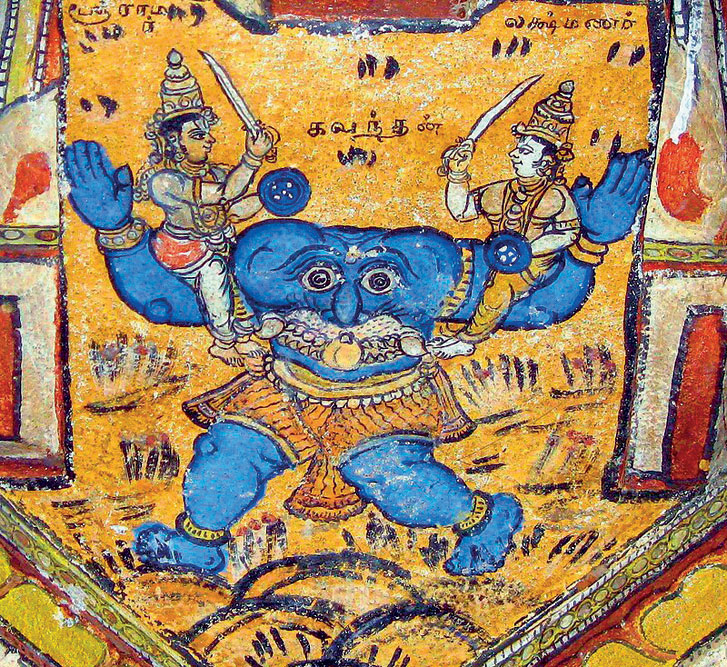
The Ashtavakra Gita is a definitive text of the Advaita Vedanta path of Indian philosophy. Advaita means not two, or more commonly, non-dual. Advaita Vedanta is part of the many traditions of the Vedanta, one of the six astika schools of philosophy. Advaita Vedanta teaches, in simple terms, that there is no difference between the individual soul and the universal consciousness, between the atman and Brahman. As feeling of this separation is really an illusion; therefore, the famous Advaita Vedanta lesson that all that the eye sees is not the reality—it is merely a sensory experience. The reality is that which is seeing the eyes see—the unchanging seer which is witness to birth, growth, and death of the body, and itself remains unchanged.
Ashtavakra cursed the Gandharva that he would become the Rakshasa Kabandha. However, Ashtavakra was also full of compassion. Therefore, when the Gandharva prayed for forgiveness, Ashtavakra gave him the boon that when Rama cut off his arms, he would become a Gandharva again
In my meditation practice, I had consistently read and heard the urging to ‘simply observe’. Observe the way in which I breathe, observe the sensations in my body, observe what is happening beyond my plans and my trying-s. And in that observance, recognise that, as Ashtavakra says, “You alone are the one who witnesses everything. You are almost always free. This alone is your bondage, that you look at the witness as someone else.” There are many ways to talk about this subtle but all-important shift of perspective, of gaze, as it were, brought about by the quietening of the mind. The Yoga Sutras of Patanjali talk about chitta vritti nirodha or the purpose of yoga is to quieten the mind, make it still. The beauty of this mind stillness appears everywhere as, in a sense, a final goal.
I had for a few years before the lockdown tried, intermittently, to build a meditative practice. It had not been easy. The thoughts were too plentiful. The mind too excited, too anxious. There were too many goals to achieve, disappointments to overcome. More than anything else, my path was littered with the anticipation of the future. I always knew (or so I imagined) what was coming, what was going to happen, and my role in making it happen. The future had become the great obstacle in the path of my staying in the present.
The Covid-19 lockdown broke my attachment to the future. For the first time in my adult life, and indeed for the first time in my fifteen-year career, I found myself unable to, with any degree of confidence, answer what might happen in six, even three, months to my career, or even life. This was, at once, immensely anxiety-inducing, and, from time to time, oddly liberating. There were reasons too many to count for the anxiety; for the liberation, there was one primary cause: there was nothing left to lose.
“In this world,” says Ashtavakra, “all that is manifest is like the conception of a snake in a rope. You are bliss and supreme bliss. You are understanding. Be happy.” I was far from happy. But such was the uncertainty of a collapsing world that, in moments, the anxious thoughts of losing everything, material and emotional, to an invisible disease, grew so fervent that imagining them beyond a point, curiously, made me feel free.
What, it occurred to me while reading the Ashtavakra Gita in my fevered meditations, would really happen if I lost everything? It would, ironically, be a fresh start free from every burden of expectation—most of which I had placed upon myself. I would have nothing to prove in such a world. No desire or ambition to be measured against. No material possession which I would be anticipated to possess. I would be, at least I could be, utterly free.
By Hindol Sengupta
(This is an edited excerpt from Life, Death and The Ashtavakra Gita by Bibek Debroy and Hindol Sengupta (Grin Media, 215 pages, ₹699).

/wp-content/uploads/2025/01/Cover-Forecast2025.jpg)







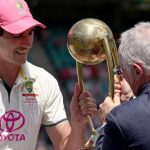
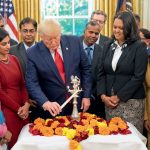

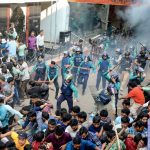

More Columns
Union Cabinet and PMO Reshuffle on Cards Short Post
A Politicised Fast Siddharth Singh
An end is a beginning Aditya Iyer